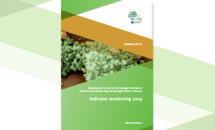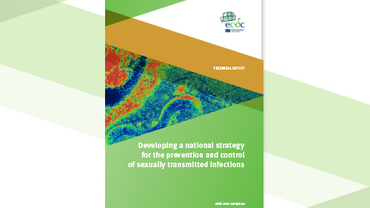Response plan to control and manage the threat of multi-and extensively drug-resistant gonorrhoea in Europe - Indicator monitoring 2019
The present report reviews the progress made over the preceding two years in the ECDC response plan to control and manage drug-resistant gonorrhoea, using the data collected for 2019.
Executive Summary
Gonorrhoea remains a serious public health problem and is one of the most common sexually transmitted infections (STIs) in European countries. Successful treatment of Neisseria gonorrhoeae infections reduces the risk of complications – such as pelvic inflammatory disease, first-trimester miscarriage, ectopic pregnancy and infertility – and reduces the risk of HIV acquisition and transmission.
The first case of genital infection with highly ceftriaxone-resistant N. gonorrhoeae in Europe was reported in France in 2011 and two high-level ceftriaxone-resistant isolates of the same strain were also reported from Spain in 2012, all of which belonged to sequence type (ST) 1407. As ceftriaxone is the last remaining option for empirical first-line monotherapy, these treatment failures triggered worldwide concern and led to the development of the Response plan to control and manage the threat of multidrug-resistant gonorrhoea in Europe in 2012 by ECDC together with an international expert group. Also in 2012, the ‘European guideline on the diagnosis and treatment of gonorrhoea’ was revised to recommend a firstline dual antimicrobial therapy consisting of a single 500 mg intramuscular dose of ceftriaxone, plus a single 2g oral dose of azithromycin. Other international gonorrhoea management guidelines were also updated to recommend similar dual antimicrobial therapies with slightly different dosages.
The ECDC response plan published in 2012 complemented the World Health Organization (WHO) Global Action Plan, as well as national action plans subsequently published by the US Centers for Disease Control and Prevention and Public Health England. In 2019, the first update to the ECDC response plan was published. It reviewed the effectiveness of the 2012 response plan, updated the indicators with data from 2017 and evaluated the achievements and progress made during the intervening years. In September 2020, EU/EEA countries were invited to provide information on the indicators for 2019, using 2017 as a baseline. Twenty-six of 31 EU/EEA countries provided data in response to this request. The present report seeks to once again review the progress made over the preceding two years, using the data collected for 2019.
Download
Read more
Surveillance and monitoring
Response plan to control and manage the threat of multi- and extensively drug-resistant gonorrhoea in Europe
ECDC reviewed the response plan and the 2019 update strives to further support EU Member States to develop and implement national strategies and interventions to control the threat of multidrug-resistant and extensively drug-resistant gonorrhoea in a multidisciplinary approach by outlining the suggested public health response to this threat with several vital components.








